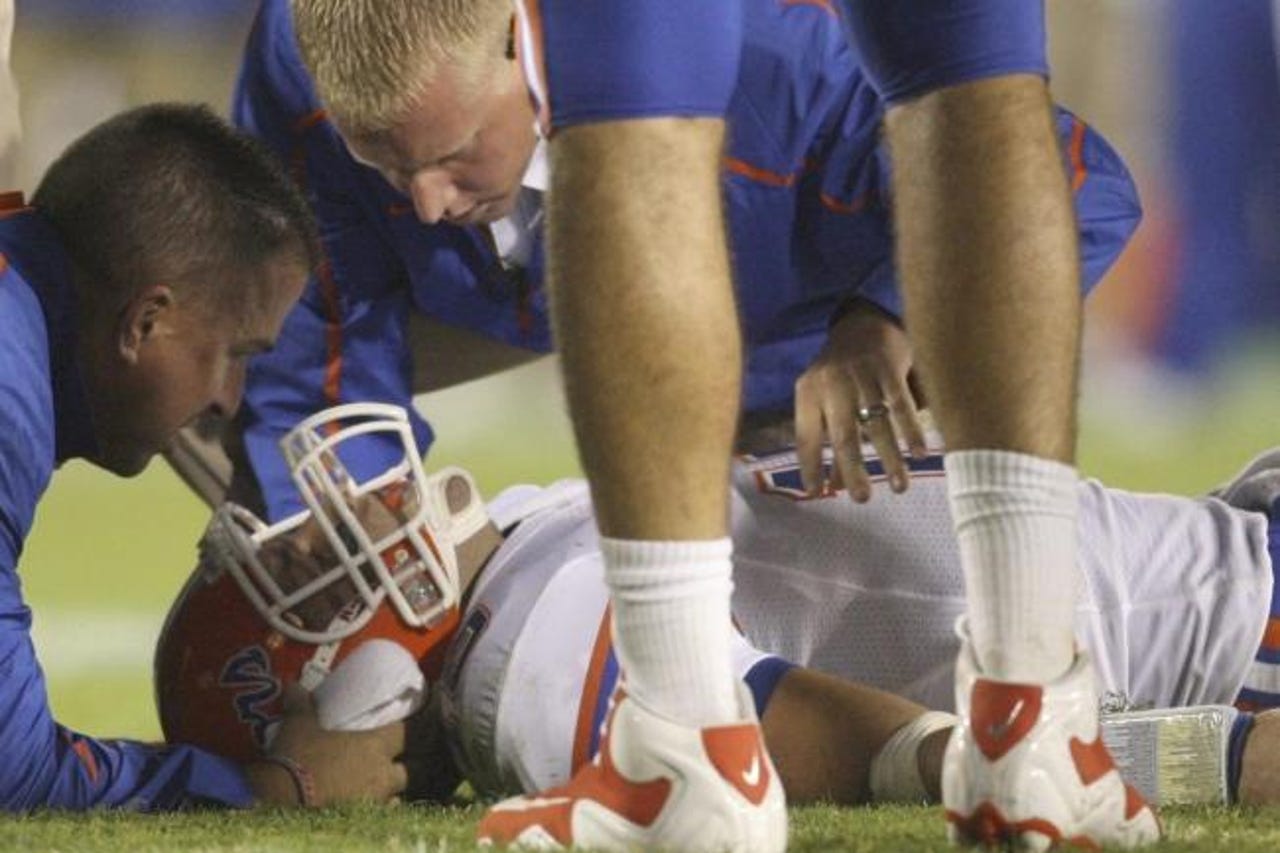Hunting for concussions with VR


See als
A company that makes a VR headset that measures impairments associated with concussion will soon be part of the NCAA-DoD Grand Alliance, the largest ever funded study of concussion and repetitive head impact in collegiate athletics and military service members. So far the study has seen total investment of over $50 million.
SyncThink's Eye-Sync device is a wearable VR headset with eye-tracking technology that measures impairments in about a minute and can "assess ocular-motor synchronization deficits and vestibular balance dysfunction," according to a spokesman. Abnormal eye movement is one of the most common deficits after a concussion occurs.
According to the NCAA, "concussions make up 7.4 percent of all injuries in college football players. The preseason has the highest injury rate (9.7 per 1,000 athlete exposures) compared with in-season (7.5) and the postseason (4.2)."
But diagnosis of concussion is famously precarious. Concussions often go undiagnosed on the sideline, leading to repetitive injuries that can have devastating consequences.
Eye-Sync received FDA Clearance in 2016, and the company has been making inroads into high school, collegiate, and professional sports like football ever since. The platform uses a series of 60-second assessments to objectively measure eye movements to identify impairments. It can help trainers and medical staff recognize the symptoms of concussion more accurately than traditional observation methods.
Problems of diagnosis aren't confined to the sidelines. Emergency room doctors and EMTs frequently miss concussion diagnoses following accidents.
The NCAA-DoD study is run by QuesGen Systems, a contract research organization with which SyncThink recently partnered. The partnership will allow QuesGen to easily transfer data captured by institutions conducting concussion research in their sports programs.
"By using the QuesGen research repository and the SyncThink platform, institutions will be able to submit patient records such as complete demographics, patient history, relevant head injury data, and subsequent follow-up care. This complete data set will be transferred directly to QuesGen via unique API access, eliminating the need for clinicians to have to document separately to meet any injury reporting guidelines."
Along with athletics, the military is a major market for SyncThink's technology.